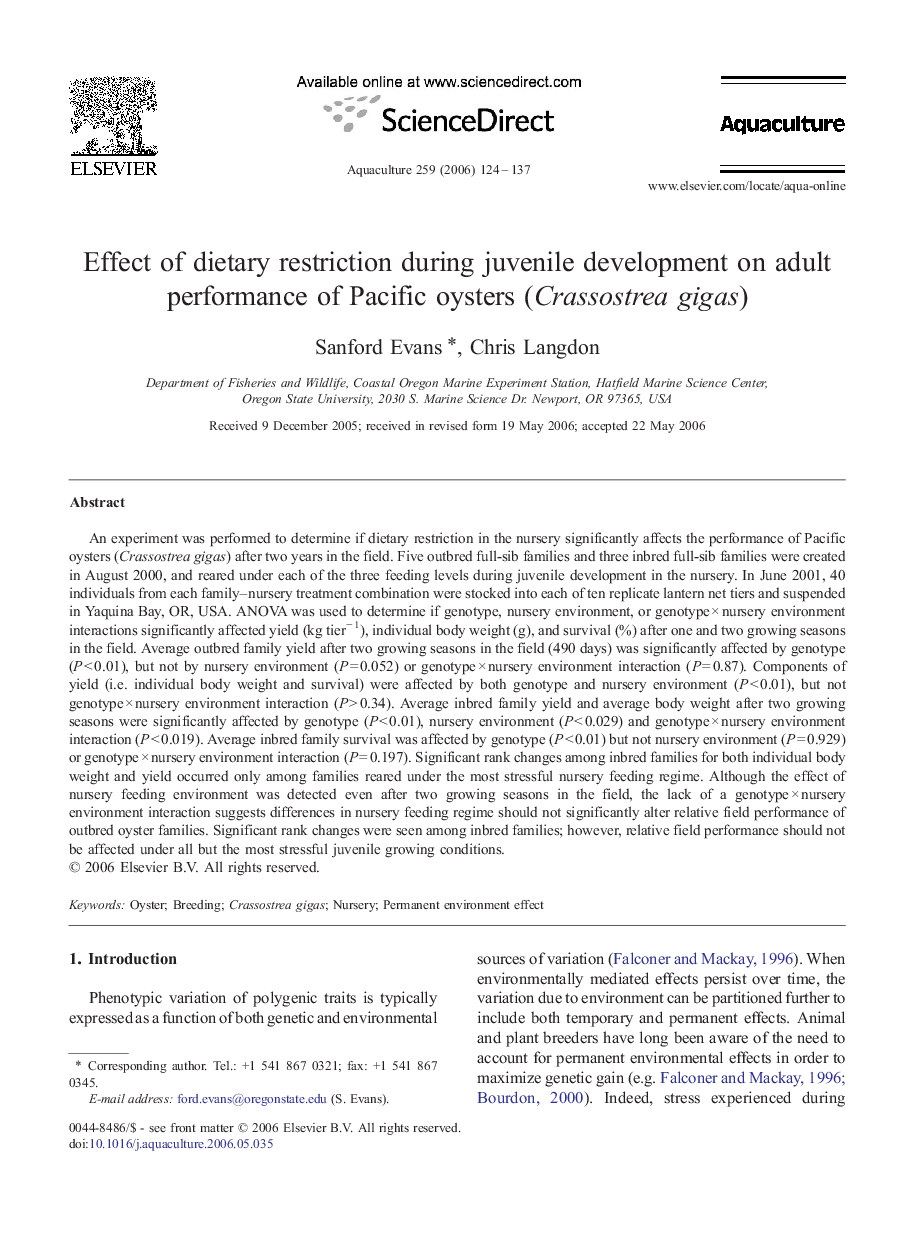| Article ID | Journal | Published Year | Pages | File Type |
|---|---|---|---|---|
| 2425774 | Aquaculture | 2006 | 14 Pages |
Abstract
An experiment was performed to determine if dietary restriction in the nursery significantly affects the performance of Pacific oysters (Crassostrea gigas) after two years in the field. Five outbred full-sib families and three inbred full-sib families were created in August 2000, and reared under each of the three feeding levels during juvenile development in the nursery. In June 2001, 40 individuals from each family-nursery treatment combination were stocked into each of ten replicate lantern net tiers and suspended in Yaquina Bay, OR, USA. ANOVA was used to determine if genotype, nursery environment, or genotype Ã nursery environment interactions significantly affected yield (kg tierâ 1), individual body weight (g), and survival (%) after one and two growing seasons in the field. Average outbred family yield after two growing seasons in the field (490 days) was significantly affected by genotype (P < 0.01), but not by nursery environment (P = 0.052) or genotype Ã nursery environment interaction (P = 0.87). Components of yield (i.e. individual body weight and survival) were affected by both genotype and nursery environment (P < 0.01), but not genotype Ã nursery environment interaction (P > 0.34). Average inbred family yield and average body weight after two growing seasons were significantly affected by genotype (P < 0.01), nursery environment (P < 0.029) and genotype Ã nursery environment interaction (P < 0.019). Average inbred family survival was affected by genotype (P < 0.01) but not nursery environment (P = 0.929) or genotype Ã nursery environment interaction (P = 0.197). Significant rank changes among inbred families for both individual body weight and yield occurred only among families reared under the most stressful nursery feeding regime. Although the effect of nursery feeding environment was detected even after two growing seasons in the field, the lack of a genotype Ã nursery environment interaction suggests differences in nursery feeding regime should not significantly alter relative field performance of outbred oyster families. Significant rank changes were seen among inbred families; however, relative field performance should not be affected under all but the most stressful juvenile growing conditions.
Related Topics
Life Sciences
Agricultural and Biological Sciences
Aquatic Science
Authors
Sanford Evans, Chris Langdon,
